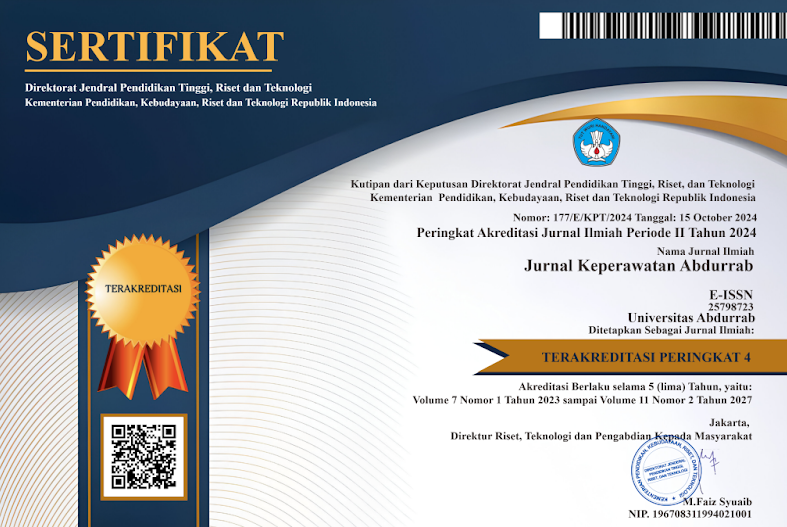PENGARUH PENGGUNAAN BOLA BOBATH TERHADAP SKALA NYERI PADA BAYI SAAT IMUNISASI
DOI:
https://doi.org/10.36341/jka.v7i2.4029Keywords:
ball of bobath, pain, immunization, infantAbstract
Immunization is a step to strengthen the individual's immune system against a type of disease. By immunizing, the body will be trained to recognize and fight certain diseases by forming antibodies. Handling pain in infants during immunization is needed as a form of diverting the baby's attention to pain. This can be done by pharmacological and non-pharmacological methods. Researchers used the bobath ball media and the MBPS scale to measure pain scores in infants during immunization procedures. This study aims to determine the effect of the bobath ball on the pain scale in infants aged 9-12 months when immunized at the Sidomulyo Health Center in Pekanbaru. This type of research is quantitative using an experimental design, namely Quasi experiment post-test only with non-equivalent control group design. Data were collected from 10 control groups and 10 intervention groups. Measurement of pain after immunization using the modified behavior pain scale (MBPS). The results showed that there was a difference in the mean pain response in the intervention group which was lower than the control group where the p value <0.005 (p=0.000 at α=0.05). Suggestions from the research. The implications for nursing are that nurses are expected to be able to use and apply methods in diverting pain in infants when immunized with other modifications so that pain can be reduced.
Keywords : ball of bobath, pain, immunization, infant
Downloads
Downloads
Published
Issue
Section
License
1. Copyright of all journal manuscripts is held by the Jurnal Keperawatan Abdurrab
2. Formal legal provisions to access digital articles of electronic journal are subject to the provision of the Creative Commons Attribution-ShareAlike license (CC BY-NC-SA), which means that Jurnal Keperawatan Abdurrab is rightful to keep, transfer media/format, manage in the form of databases, maintain, and publish articles.
3. Published manuscripts both printed and electronic are open access for educational, research, and library purposes. Additionally, the editorial board is not responsible for any violations of copyright law.
licensed under a Creative Commons Attribution-ShareAlike 4.0 International License.






